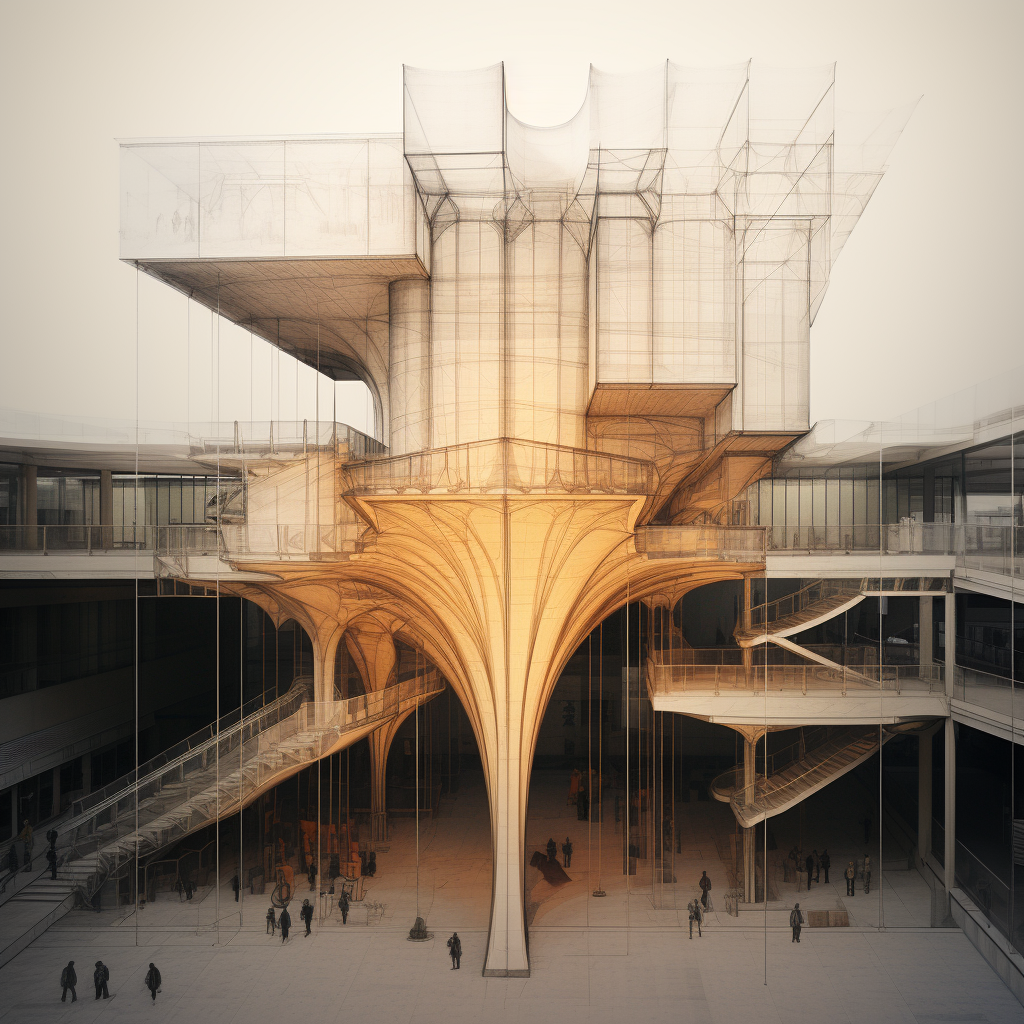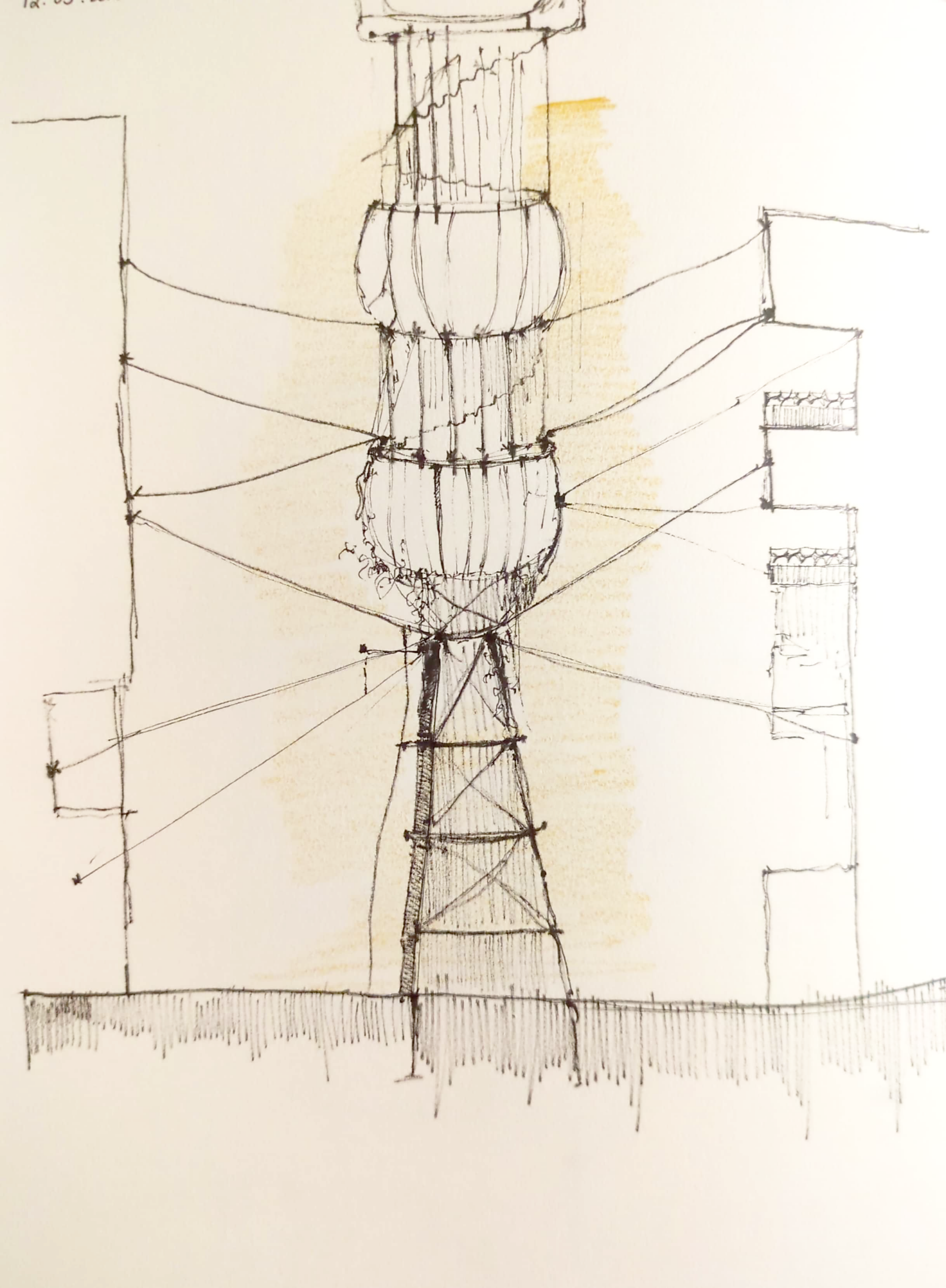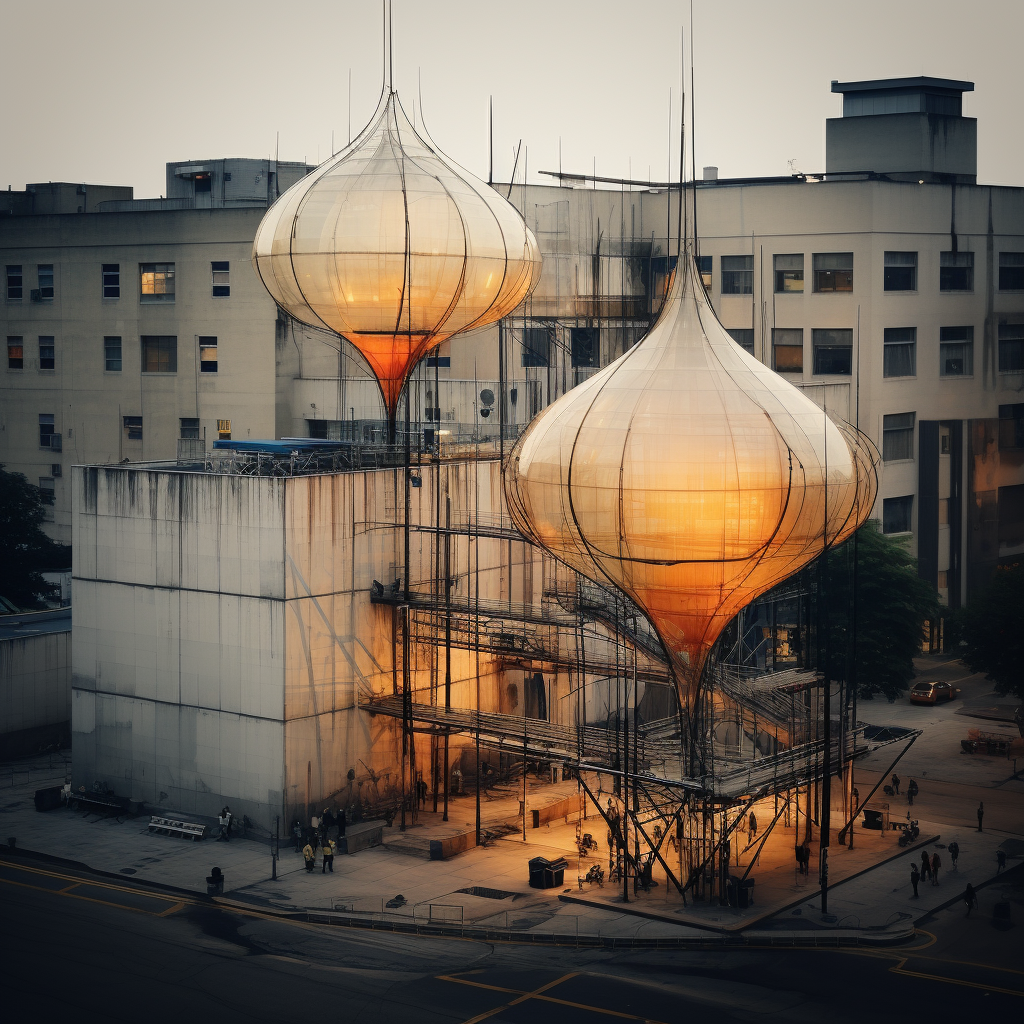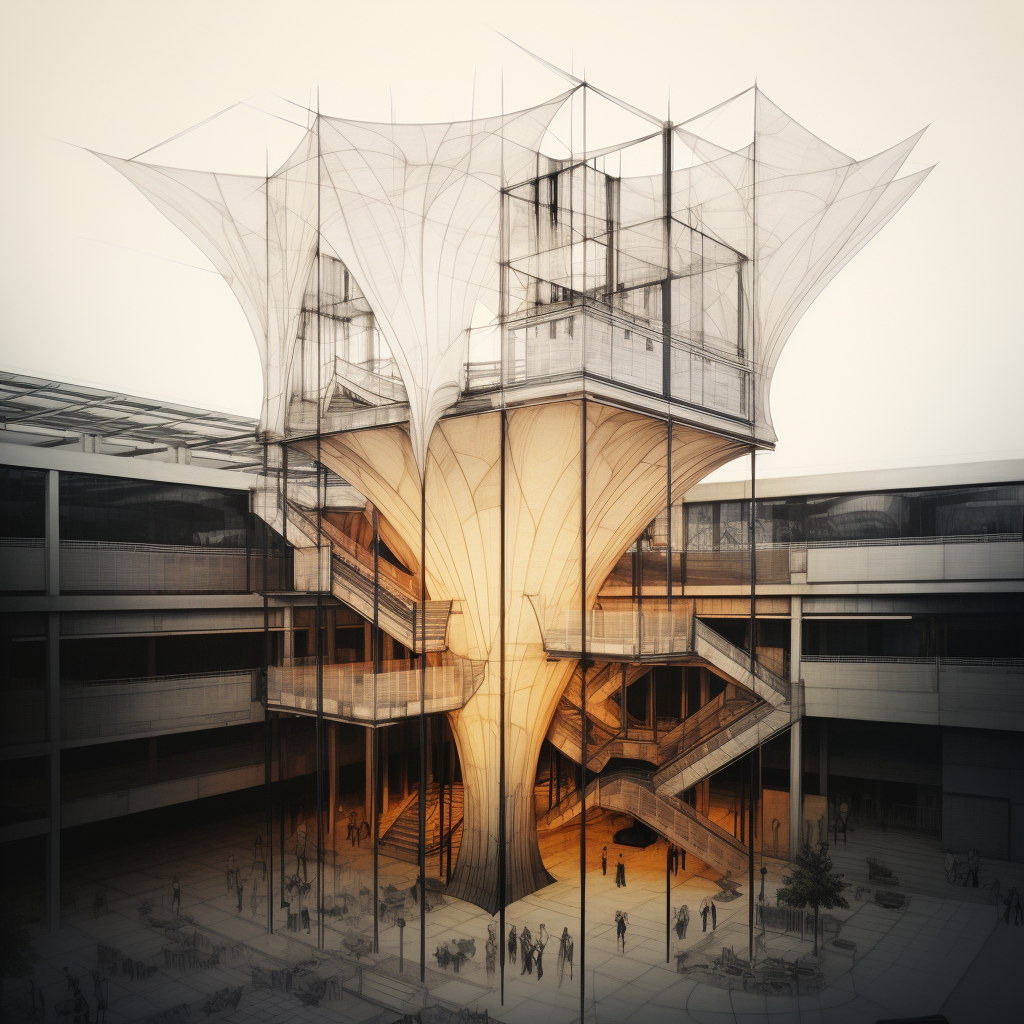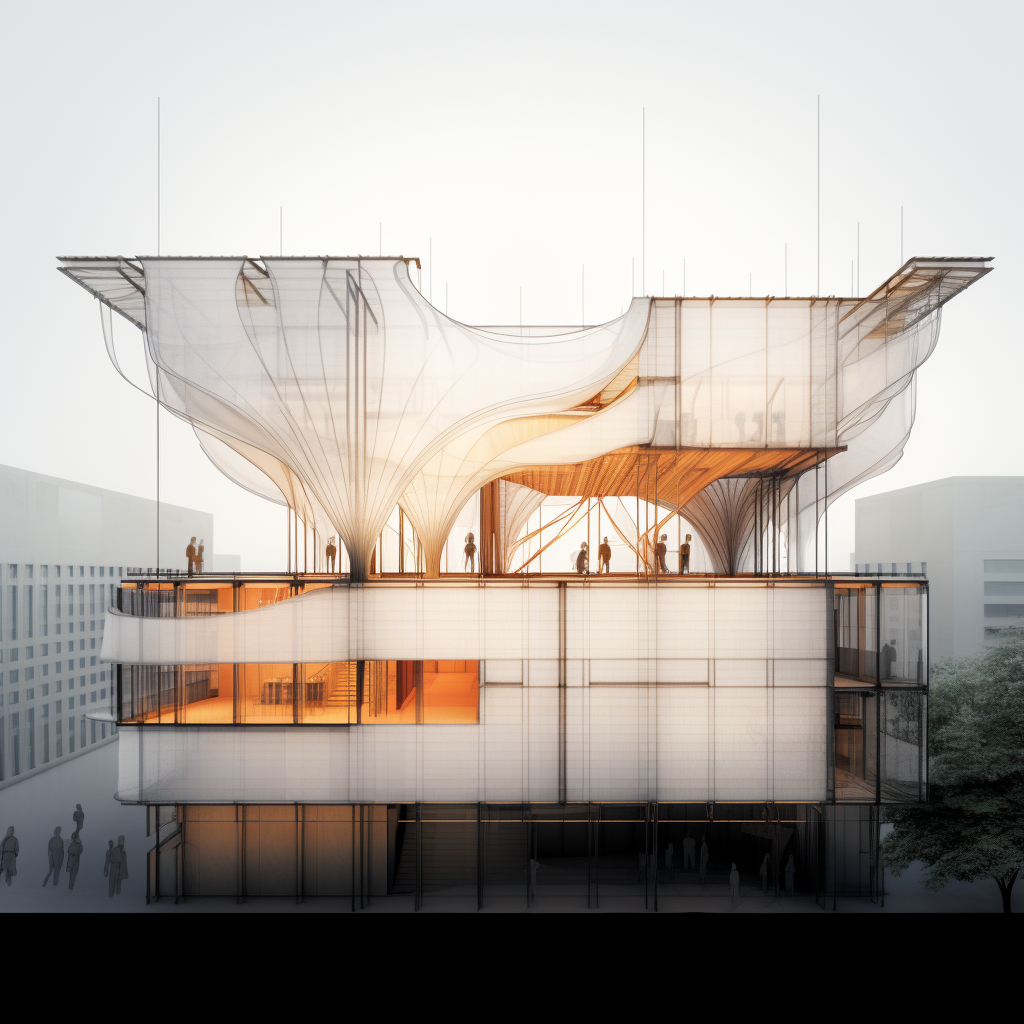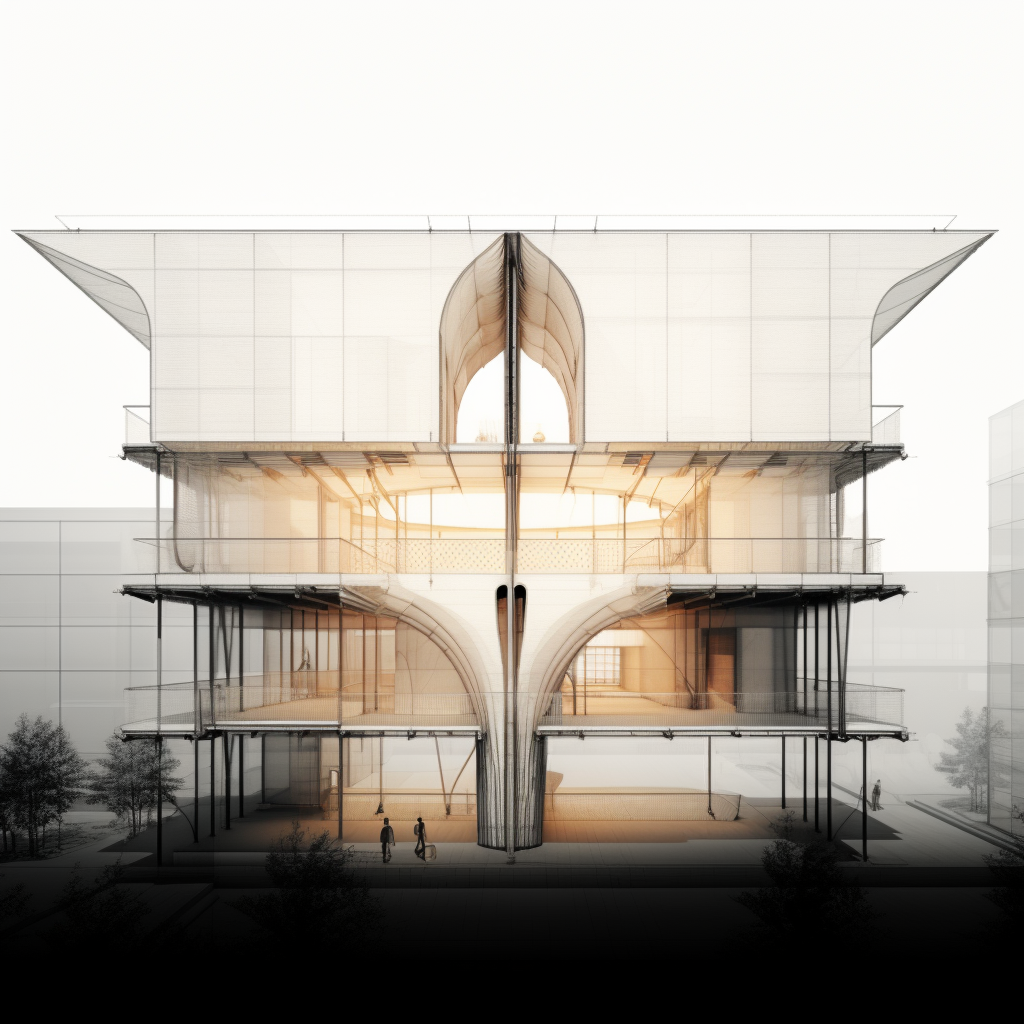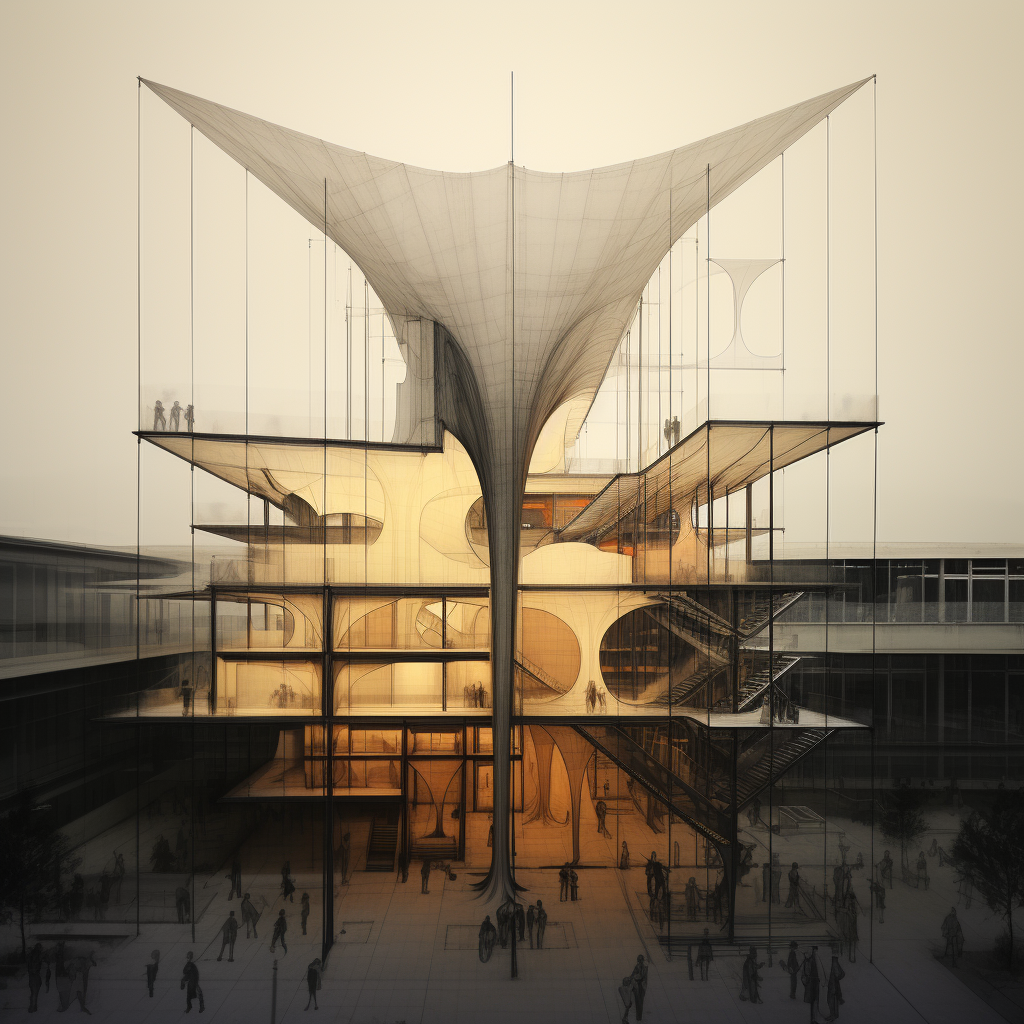At DIALOG, we foster creativity, curiosity, and out-of-the-box thinking to explore unique and innovative ideas that can meaningfully improve the wellbeing of our communities and the environment we all share. DIALOG’s 2022 Iris Prize recipient Maya Jarrah, intern architect, shares her winning research titled Architect x Machine, which explores the potential use, capabilities, and shortcomings of artificial intelligence in design and architecture.
Every year, DIALOG provides its employees the opportunity to submit an innovative concept through an internal DIALOG scholarship Iris Prize. The annual competition allows employees two weeks of paid time off and up to $8000 to conduct research or undertake a project in an area of personal interest, relevant to the practice of architecture, engineering, interior design, planning, urban design, or landscape architecture.
In 2022, DIALOG intern architect Maya Jarrah was selected as Iris Prize recipient for her submission titled Architect x Machine, which aims to test different artificial intelligence tools that can be used in the process of designing buildings and cities, to better understand AI’s capabilities, shortcomings, biases, and potential use in an architectural practice.

Maya Jarrah, intern architect, DIALOG
“Technological advancement is inevitable, and fear of technology will only leave us ill-prepared for the future,” Jarrah says. “What we need is a better understanding of the tools that can help us expand our imagination and create more efficient and imaginative designs, beginning with Artificial Intelligence.”
Jarrah’s interest in AI started with a tweet by OpenAI.

Screenshot: Tweet by OpenAI.
The tweet introduced Dall.e, an artificial intelligence system that can create realistic images and art from natural language and descriptive text. Jarrah was fascinated by this concept, not knowing that it was possible for a system to easily generate realistic images from a simple description. She signed up for Dall.e and other image generation tools and tested on architectural images right away, generating a conceptual collage in the early design phase for a multi-generational housing project. Jarrah photoshopped multiple generated images, visualizing the idea of exterior tempered corridors, a courtyard, and modularity. The collage became an inspiration for the design in later stages of the project.

Conceptual collage created during the early design phase for the Multi-Generational Housing Project.
From there, questions and curiosities swirled.
How can we use image generating tools like Midjourney and Dall.e to expand on our imagination and create images with the sole purpose of inspiring us? How could these tools be pushed to generate images that are reflective of structural integrity and resolved materiality? Would using these tools mean that we are mainly depending on a limited understand of cultural differences in design thinking and approaches to construction? How can we adapt to these changes? Is it time for us to re-define the notion of the architect?
To address these questions and curiosities and execute her research, Jarrah decided to further explore AI tools used in different phases of the design process; take part in conversations around the future of technology in the practice; learn from professionals in the field; use AI software for some of the tasks performed at DIALOG; and start a conversation within DIALOG around the future of our roles as designers and architects.
Explore AI tools used in different phases of the design process.
Jarrah spent a substantial amount of time testing AI tools, specifically Midjourney, to generate architectural images that allows her to develop a more critical understanding of the use of the tools in the creative design process. She experimented with many workflows, but one that stood out to her was exploring hybrid workflows; a human-machine feedback loop approach for collaborative ideation and creation.
Jarrah conceptualized a lightweight tensile structure with platforms in an urban context. She started with a hand sketch and a text prompt to input to Midjourney, then used the images generated and a new description to combine with the original sketch to produce a better representation of the idea. Jarrah went back and forth blending the images and text descriptions generated, and although some ideas were not in Jarrah’s intentions, she used the images in her workflow. The more Jarrah blended all the relevant images together, the closer she got to what she had envisioned. Jarrah thought of this workflow to be productive and allows for new ways of thinking. She believes that when using generative AI, the ideation process should continue to be a process of iterations and a feedback loop – a process that is iterative and analytical, just like any design process.
